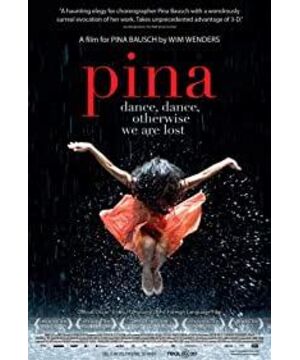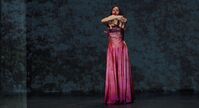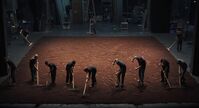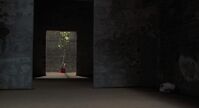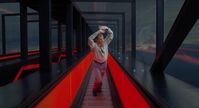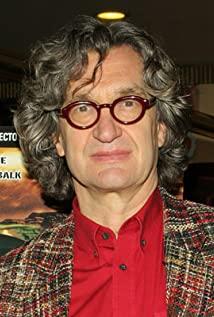The master tells the master, but does not tell the story, just reproduce PINA's wonderful choreography piece by piece.
Between the dances, there are the silent confessions of the dancers who used to work in the Wuppertal Experimental Theater, and the clips of the protagonist PINA quietly smoking a cigarette and looking at the camera. They are really a group of dancers with temperament. They just look at you silently, but their power is amazing.
The film (or dance) is full of tension everywhere, combining the moving figure with the sad expression in the same dancer, showing the soft dancer and the rigid building in the same picture.
There is an intense beauty in this absurdity. The most impressive scene: a girl in a floral skirt walked out from the side of the screen, put on dancing shoes, stood up and danced alone in front of the huge and cold machinery in the Ruhr area, the wind blowing the skirt and the point of the dancer's feet The rhythm and rhythm were matched together, and turned into a dancing spot of light in front of the towering steel factory, so amazing that I burst into tears.
Most of the silence in the film expresses such a "contradictory" charm, as one dancer said: "Pina always tells me that your fragile (Fragile) happens to be your strength (strength)". It is said in this book that the depiction of misery in modern art can lead to a typical understanding of modernity, that is, negative presentation. Perhaps absurdity and contradiction can also be attributed to this "modernity" part.
The master of the film tells about the master of dance, but quietly brings in the works of many masters of architecture as a foil.
On the giant elevator in the renovation of OMA Zollverein, the dancers in suits danced in circles as they moved backwards, seemingly describing the ultimate tragedy of the Sisyphus-style cycle. OMA's usual orange-red renders this scene's illusory undertone.
In SANAA's Zollve School of Management, a man kept supporting a woman who was about to fall. The man was expressionless, and the woman frowned. The transparent space in the designer's mouth turns into a large, self-contained and empty room in the camera lens, with ethereal windows, plain walls and a weak figure, all of which reveal the hopeless hope in the predicament.
My favorite is the scene in a glass box. The Mies-style glass box is located in the woods, and the sun shines through the gaps in the branches and leaves, witnessing the reconciliation of two men: one of them leaps high and falls into the other's arms, standing still. . full of power. In the glass house, there was also a woman trying to save her lover, and the last red dress flew out of the glass house.
Wuppertal floats beside the suspended cable light rail above the river, and there is always a man circling the woman into the distance. I was moved by this light rail when I watched "Alice in the City", but I didn't expect it to be the home of the Pina Experimental Theater. Really hope to visit there someday.
It seems that Wenders is warming up for his next 3D film about architecture.
“I have actually already started a long-term project, another documentary in 3D. It will take several years, but it's going to be about architecture. I have always wanted to do a film about architecture, and I have a lot of architect friends . But that is another subject I never really knew how to approach with film. I realized through PINA that architecture is something that could have a real affinity to this medium. Most architects build this stuff and they already have 3D representation. They can enter a building before they even build it. But I think especially with modern architecture, to make a film that really deals with the sense of place and how it changes the way people use buildings and are shaped by cities and buildings, that could not really have been done before. To feel what the room does to you,that is something that you could describe almost better in words than in a two-dimensional film. It is really about a sense of place. That's a feeling that many architects share with filmmakers and that's a common thing the two professions have. I'm really excited to have this tool now that gives this sense of place, and so I am quite excited about my architecture project.”
Hope alas.
View more about Pina reviews


